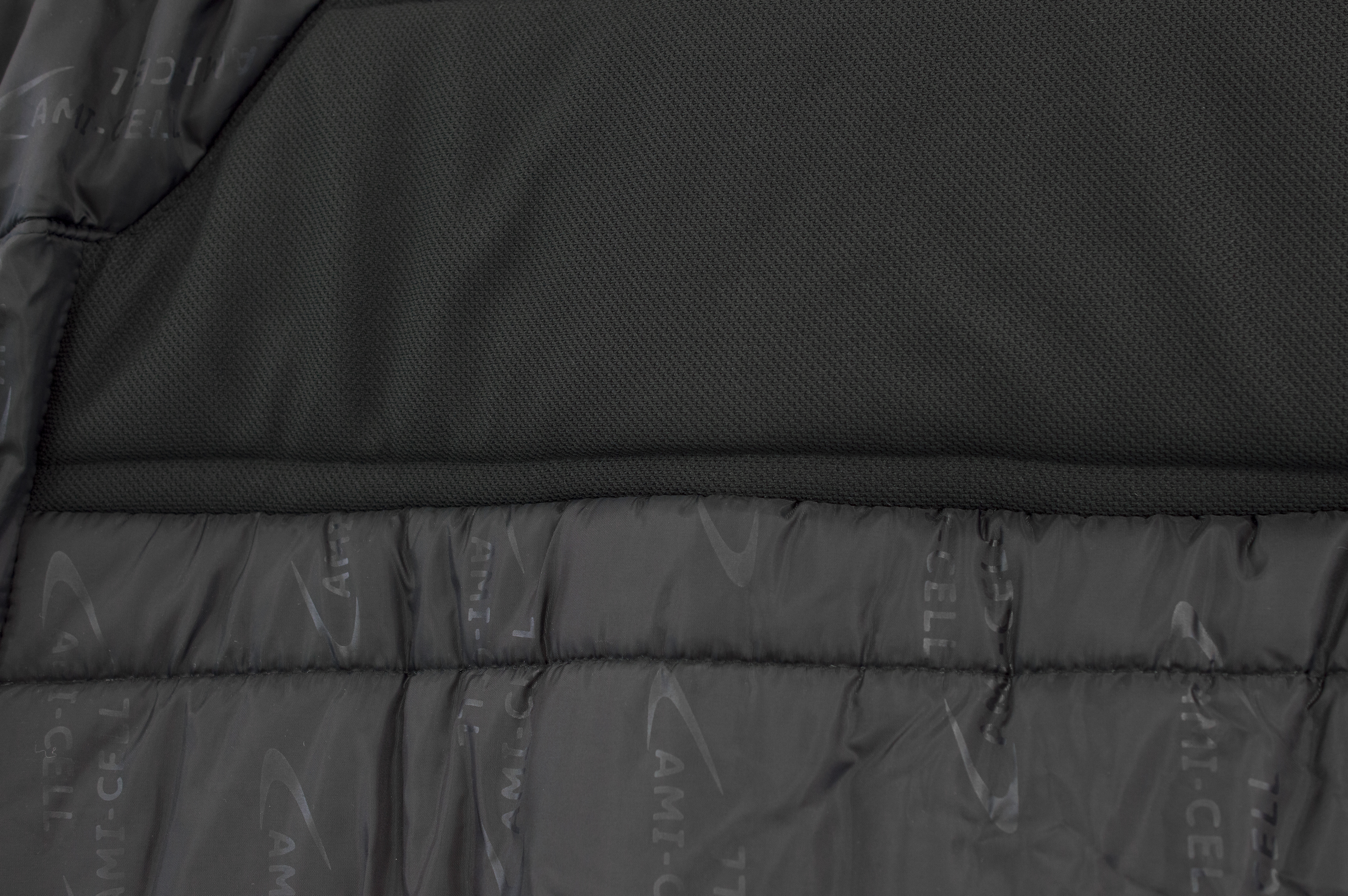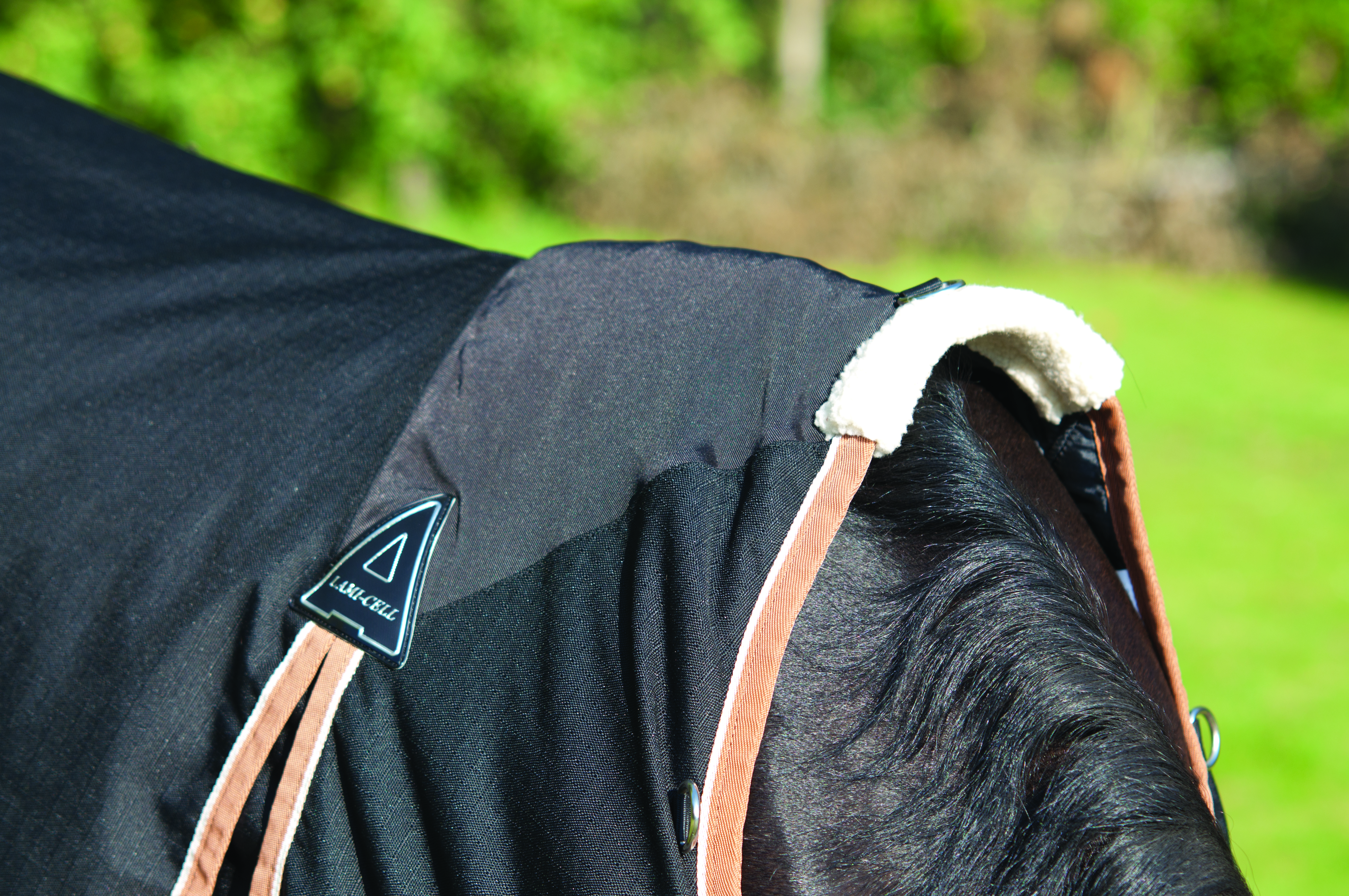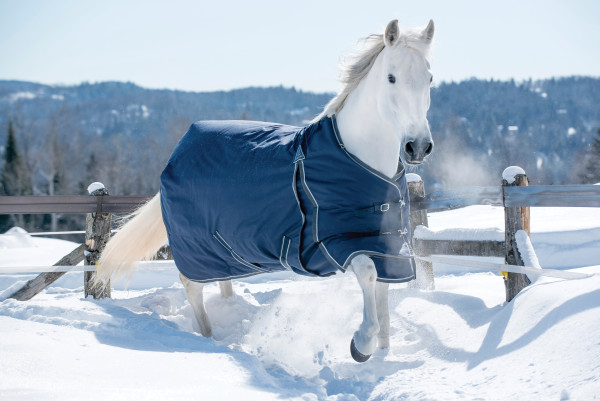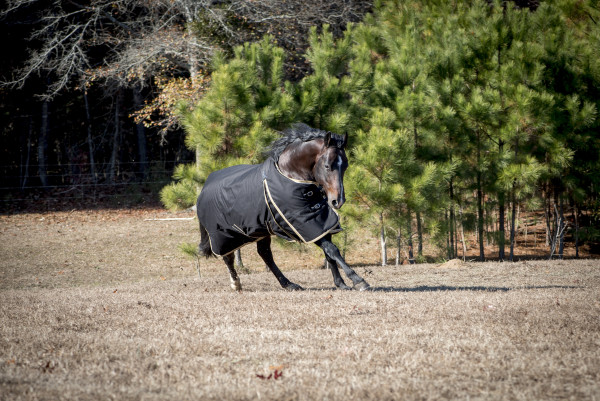Home > Horse Care > Farm and Barn > Turnout Technology
Turnout Technology
- October 30, 2019
- ⎯ Partrade
Cold weather is upon us and your first instinct might be to bundle your horse up like a child—in so many layers that he can barely move, with only his eyes visible.
Resist that urge! Go instead for a blanketing system that is waterproof, breathable and light, with a rip-stop outer shell (think 1,200-denier, ideally with Teflon™ Shield finish) and at least three insulation options (such as 0 gram, 300 gram and 500 gram) for varying weather conditions.
Five Essential Features for the Perfect Fitting Equine Outerwear
We curated five key features to help ensure your horse’s comfort, no matter how low the mercury drops or how hard those cold winds blow.

1. Equine Outerwear Should Have a Moisture-Wicking Lining Nowhere does sweat accumulate faster than under a turnout blanket after a horse has had a good gallop (or after the temperature warms). The buildup of moisture combined with body heat can lead to bacterial conditions and skin diseases. In addition, when the temperature drops, the wetness trapped against your horse’s skin can cause chilling. To help prevent skin issues and regulate body temperature, look for a quick-dry lining or other moisture-wicking technology in the blanket’s interior, particularly along the back. If you’re looking for a blanket that has both of these qualities, the Lami-Cell Pro-Fit turnouts have both quick-dry lining and Synthermax breathable fiberfill that keeps your horse warm but light in weight. They come in four handy weights at 0g, 150g, 300g, or 500g fill depending on your location’s temperature range.

2. Equine Outerwear Should Provide Withers Relief Since turnout blankets are designed to be worn for extended periods, most are made with extra padding or sheepskin at the withers to keep this bony prominence from getting rubbed, which can lead to both soreness and hair loss. However, many traditional turnouts put pressure on the horse’s withers and leave a gap by the neck that allows cold air to flow under the blanket. One style of turnout blanket (the Lami-Cell Pro-Fit) seeks to alleviate this with a patent-pending stretch insert that moves with the horse when he bends his neck to graze. This relieves pressure at the withers while also enhancing freedom of movement and retaining warmth under the blanket.

3. Equine Outerwear Should Have Shoulder Gussets While we’re talking about freedom of movement, don’t forget the shoulders! Any turnout blanket worth its salt features gussets in this area. However, many blanket gussets fall behind the horse’s shoulder, which is not the ideal location. The higher and wider the gussets are cut, the more comfortable the blanket—and the less rubbing and hair loss on the pressure points of the shoulder blades. Gussets that cut at an angle to follow the natural structure of the horse’s shoulder are another bonus that’s especially worth the investment.

4. Equine Outerwear Should Feature Secure Surcingle Closures A turnout blanket is only as good as its closures. Rubber washers are a step in the right direction when your goal is keeping surcingles in place. Better still is a secure-lock system that makes the surcingles easy to lock in place without the use of washers. No more horses careening around with dangling straps and slipping blankets!

5. Equine Outerwear Should Have Neck Covers Consider adding a neck cover to your horse’s turnout blanket, especially if you’re trying to keep his haircoat short for competition or just general ease of cool out. Look for a lining and insulation like that in your blanket, as well as sturdy snap attachments and double Velcro closures (the wider the better). Neck covers should be available in several sizes for a better fit; an expandable gusset is another feature that promotes comfort, since your horse spends much of his time with his neck down, grazing.
Additionally, none of these options are limited to winter blankets. Some companies are offering summer-weight turnouts—even fly sheets—with similar comfort features. So now that you’re informed, happy horse-blanket hunting!






